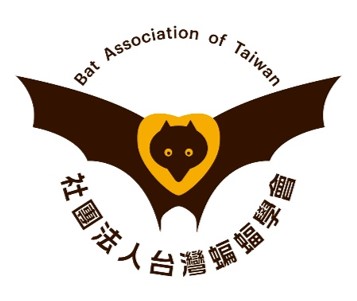蝙蝠研究
2008_新生高頭蝠(Scotophiluskuhlii)的聲音發展與成長發育_黃珊珊
出版年份:2008
研究生:黃珊珊
分類:碩士論文
題目:新生高頭蝠(Scotophiluskuhlii)的聲音發展與成長發育
Title:Postnatal development of vocalization and growthin Scotophilus kuhlii
摘要:
本研究針對高頭蝠幼蝠,建立其聲音和成長發展模式,並進一步控制同胎雙生幼蝠的成長環境,比較母蝠哺育與人工養育之幼蝠的發展差異。本研究旨在瞭解高頭蝠幼蝠回聲定位叫聲的發展及其影響因子;並推測在自然狀況下,遭母蝠遺棄而由人工養育之幼蝠,其形態與叫聲是否正常發展;最後探討蝙蝠出生後的成長率,有助於在野外預測幼蝠的年齡。
研究結果顯示,高頭蝠幼蝠的分離叫聲是以多諧音的單音為主,母蝠哺育之幼蝠平均在12日齡以前是以分離叫聲為主要叫聲,之後漸漸發展成以回聲定位前期叫聲為主,平均到20日齡後,很少再出現分離叫聲。分離叫聲的第一與第二諧音之最高頻率會隨著年紀提高,而最低頻率則變動不大,叫聲頻距、叫聲間距及諧音數則隨年紀而減少。回聲定位前期叫聲的發展則是兩諧音的最高和最低頻率隨年紀明顯提高、頻寬與斜率增加、叫聲頻距縮短及諧音數減少。高頭蝠幼蝠出生當天即能展現聲音的個體特徵,隨著年紀增長,幼蝠聲音的個體特徵及同胎幼蝠間的相似度均會提高。另外,21日齡以前是高頭蝠體重和前臂長的線性發展時期,之後成長漸趨緩慢。到49日齡時,體重及前臂長已分別達到母蝠的79.44 %與95.13 %。
由人工養育之幼蝠,雖然形態成長較快,聲音發展的過程較不穩定,但聲音的發展趨勢與母蝠哺育之幼蝠一致,待生理成熟後,仍能發展出與成蝠相似的回聲定位叫聲。研究結果顯示,遺傳是高頭蝠幼蝠叫聲發展及個體變異的重要影響因子,但社會學習可促使叫聲較快達到穩定。
Abstract:
This study investigated the development patterns of vocalization and growth in the lesser Asiatic yellow house bat, Scotophilus kuhlii. By further controlling the rearing environment of twins, the differences in the development patterns between the maternal-cared and hand-reared juveniles were also examined. The purposes of this study were to investigate the development of echolocation calls and relevant factors, to speculate if the morphology and vocalization of the hand-reared juveniles, abandoned in the wild, could develop the same with those of the maternal-cared juveniles, and finally to quantify the postnatal growth rate which could be applied to determine juveniles’ age in the wild.
Results showed that isolation calls of Scotophilus kuhlii were primarily consisted of single notes with multiple harmonics and, in addition, were the main calls emitted by the maternal-cared juveniles until day 12, gradually followed by the precursors of echolocation calls. After the age of 20 days, isolation calls were rarely recorded again. The maximum frequencies of the fundamental and second harmonics of isolation calls increased with age though the minimum frequencies kept consistent. The pulse duration, inter-pulse interval and number of harmonics decreased. On the other hand, the development of precursors of echolocation calls showed increases in both the maximum and minimum frequencies of the fundamental and second harmonics, as well as bandwidth and sweep rate. At the same time, the pulse duration and number of harmonics decreased. Calls of newborn Scotophilus kuhlii revealed individual and family signatures which became more obvious with growth of age. Body mass and forearm length both increased linearly until the age of 21 days; subsequently, the growth rate decreased. At 49 days, mean body mass and forearm length of juveniles were equivalent to 79.44 % and 95.13 %, respectively of those of adult females.
Although hand-reared juveniles exhibited faster growth rates and relatively unstable vocalization, the pattern of vocal development was eventually the same with that of mother-cared juveniles. Once hand-reared juveniles were physiologically matured, their echolocation calls became similar to adults’. This study evidenced that genetic influence is one of the major factors in vocal development and individual identity; however, social learning also acts as an important element to facilitate the development.
